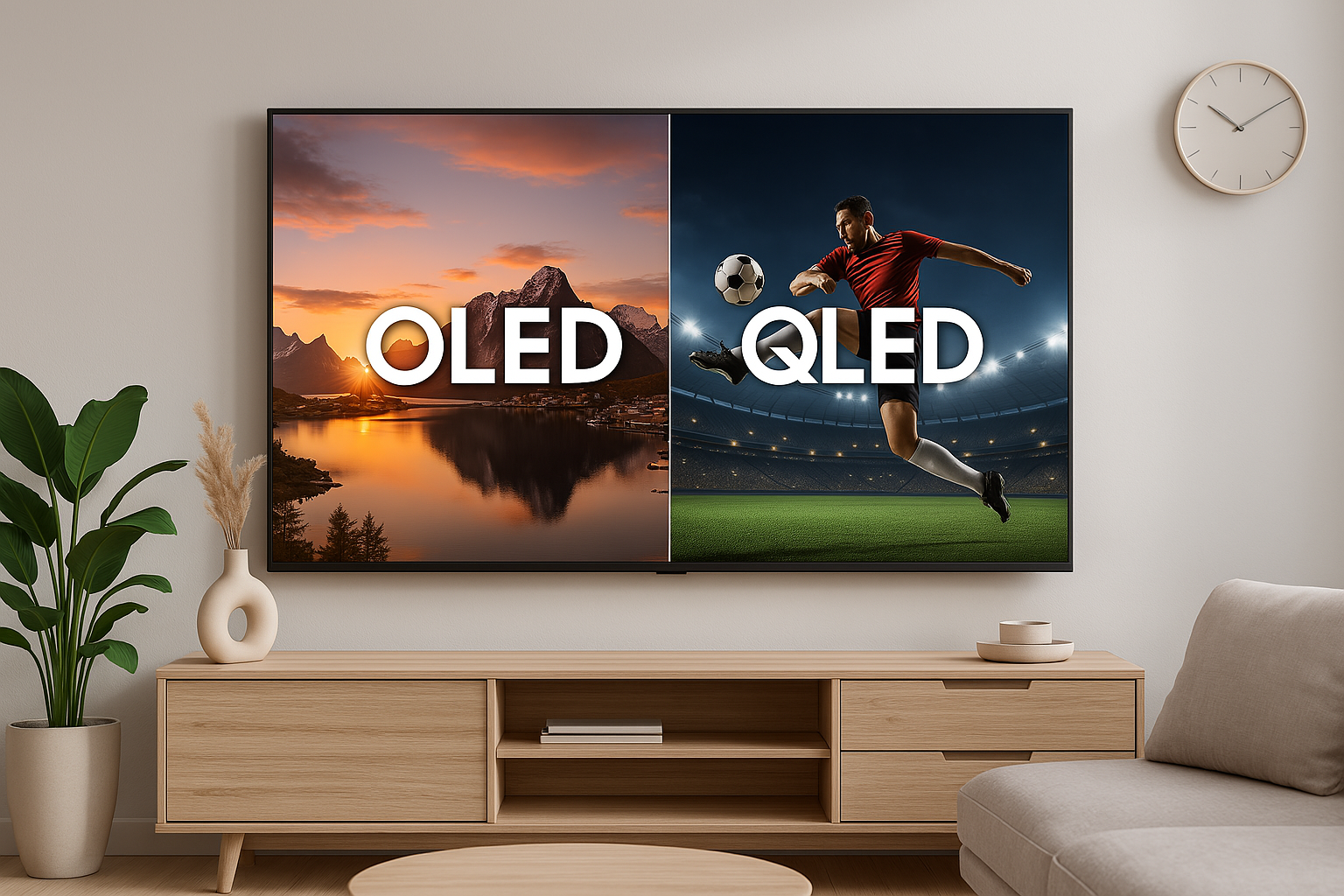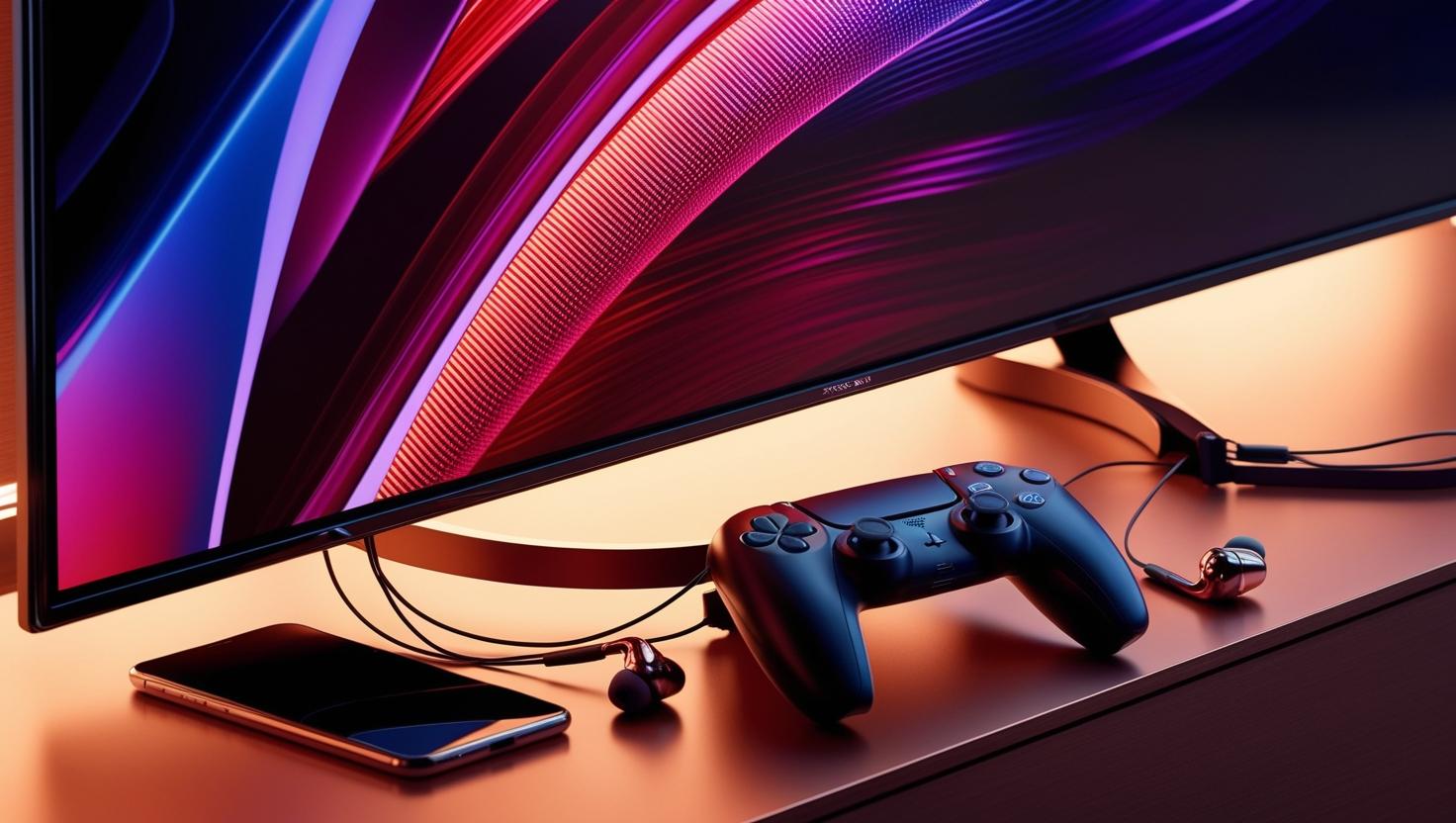QLED vs OLED: Which TV Technology is Better in 2025?

When it comes to choosing the perfect TV, one of the most important decisions you’ll make is between QLED vs OLED. Both technologies have evolved rapidly and offer stunning picture quality, but they cater to different needs and preferences. In this article, we’ll break down the key difference between OLED and QLED in 2025 and help you decide which one is right for your home.
What is OLED TV?
OLED stands for Organic Light Emitting Diode. Unlike traditional LED TVs that use a backlight, OLED panels are made of organic compounds that emit light when an electric current passes through them. This means that each pixel in an OLED display is self-lit, allowing for perfect blacks, infinite contrast ratios, and incredibly vivid colors.
A Brief History of OLED
OLED technology has its roots in research from the 1980s, but it wasn’t until the mid-2000s that the first OLED displays appeared in consumer devices. Sony introduced the first OLED TV in 2007, but it was LG that brought the technology to the mainstream with large, commercially viable OLED TVs starting in 2013. Over the years, OLED panels have become thinner, more energy-efficient, and more affordable, making them a top choice for premium home entertainment setups.
How OLED Works
Each pixel in an OLED panel consists of organic materials that emit light when electrically stimulated. Because there’s no need for a separate backlight, OLED TVs can achieve perfect black levels by turning off individual pixels. This self-emissive nature also allows for faster response times and more precise control over brightness and contrast.
Key Benefits of OLED:
Perfect Black Levels: Each pixel can turn off completely, creating absolute blacks.
Wide Viewing Angles: The image quality remains consistent even from the sides.
Thin and Flexible Designs: OLED TVs can be extremely slim and even bendable.
Fast Response Time: Excellent for gaming and sports with minimal motion blur.
What is QLED TV?
QLED stands for Quantum-dot Light Emitting Diode, a technology developed and promoted primarily by Samsung. QLED TVs are essentially LED TVs enhanced with a quantum dot filter that improves brightness and color accuracy.
A Brief History of QLED
QLED technology emerged as a response to OLED dominance in the high-end TV market. Samsung introduced its first QLED TVs in 2017 as a significant upgrade over traditional LED/LCD models. QLED uses quantum dots—tiny semiconductor particles that emit precise colors when illuminated by a backlight—to dramatically enhance picture quality. In recent years, QLED technology has continued to evolve, incorporating innovations like Mini LED backlighting for greater contrast and black level control.
How QLED Works
QLED TVs use a traditional LED backlight that passes through a quantum dot layer. These quantum dots produce pure, saturated colors by emitting light at specific wavelengths. The result is a much broader color gamut and higher brightness levels compared to standard LED TVs.
Key Benefits of QLED:
Higher Brightness Levels: Best TV for bright room and HDR content.
Vibrant Colors: Quantum dots enhance color volume and richness.
No Burn-In Risk: Unlike OLED, QLED TVs don’t suffer from image retention or burn-in.
More Affordable Options: Available in a wider range of price points.
Picture Quality Comparison: QLED vs OLED
Answering the question what is the difference between OLED and Q LED we need to understand that both OLED and QLED TVs offer exceptional picture quality, but their strengths differ.
Blacks and Contrast: OLED is better than QLED with its self-emissive technology.
Brightness: QLED is best TV for light rooms thanks to higher peak brightness.
Color Accuracy: OLEDs are slightly more accurate, but QLEDs are more vivid.
Viewing Angles: OLED maintains consistency; QLED may wash out at extreme angles.
HDR Performance: QLEDs are often better suited for HDR due to higher brightness.
Gaming Performance

When comparing QLED vs OLED for gaming, input lag and refresh rates matter.
OLED TVs: Offer ultra-low input lag and fast response times. Most support 120Hz, VRR, and HDMI 2.1, making them excellent for next-gen consoles like PS5 and Xbox Series X.
QLED TVs: Also offer low input lag and game-specific enhancements like Game Mode Pro, especially on Samsung models.
If you play in a dark room and value cinematic experiences, OLED is ideal. For bright rooms and marathon gaming sessions, QLED may be the safer choice.
Durability and Burn-In Risk
One major concern we need to mention is OLED burn in risk, where static images leave a permanent mark on the screen. While newer models have implemented burn-in prevention technologies, it’s still a risk for static-heavy use (e.g., news channels, menus).
QLED TVs, by contrast, do not have this issue, making them more suitable for varied content or commercial environments.
QLED vs OLED: Price and Value for Money
In 2025, prices for both OLED and QLED TVs have become more competitive.
OLED TVs: Previously premium-only, but now available in smaller sizes and lower prices.
QLED TVs: Offer great value at mid-range prices and come in more size options.
The OLED QLED difference becomes important when price matters—QLED often wins in affordability and screen size variety, making it an appealing option for everyday use

QLED vs OLED: Smart Features and Ecosystem
Both OLED and QLED TVs support the latest smart platforms:
LG OLED TVs: Run on webOS with excellent app support and AI features.
Samsung QLED TVs: Use Tizen OS, known for smooth navigation and Smart Hub.
Voice assistants like Alexa, Google Assistant, and Bixby are integrated in most models, making it easy to control your TV and smart home devices.
Best OLED and QLED TVs on Amazon (2025 Picks)
Top OLED TV: LG C4 65-Inch OLED TV – Stunning picture quality, HDMI 2.1 support, and Dolby Vision IQ. Check price on Amazon
Top QLED TV: Samsung QN90D Neo QLED TV – Exceptional brightness, Mini LED backlight, and advanced HDR. Check price on Amazon
QLED vs OLED Conclusion: Which Should You Choose?
To sum up the OLED QLED comparison, here’s what we can conclude:
Choose OLED if you:
Watch movies in a dark room.
Value picture quality above all.
Want a premium viewing experience.
Choose QLED if you:
Watch TV in bright conditions.
Want a more affordable large-screen TV.
Are concerned about burn-in.
In the end, both technologies have matured and offer excellent experiences. Your choice should depend on your room setup, content preferences, and budget. Whether you go for OLED or QLED, both are available on Amazon with deals updated regularly.
Explore the best QLED and OLED TVs today and find the perfect match for your home entertainment setup.
